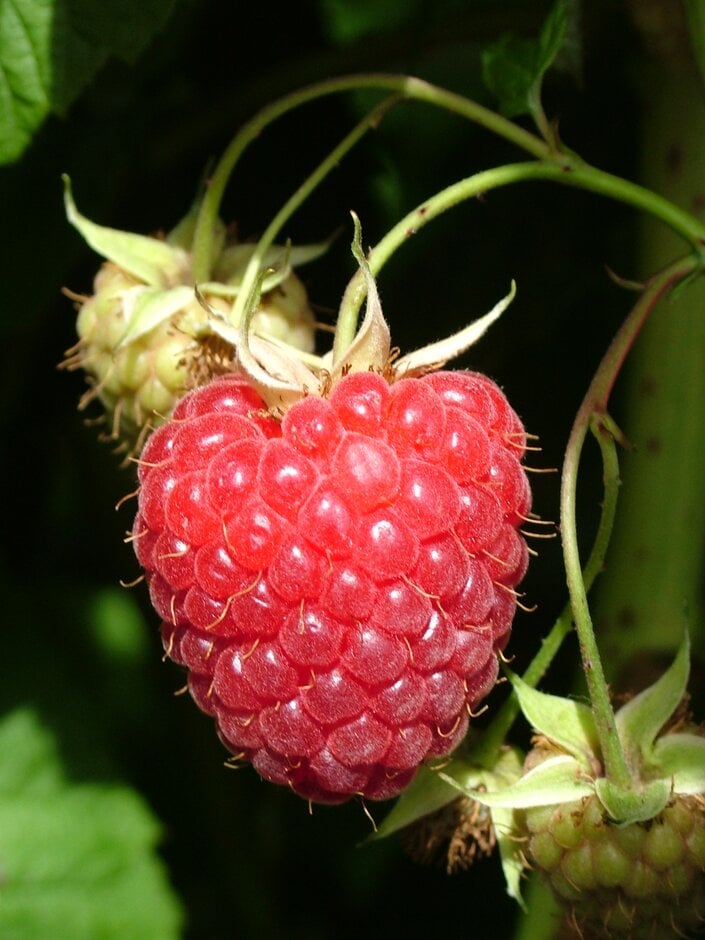Rubus idaeus Himbo Top ('Rafzaqu'PBR) (F)

raspberry [Himbo Top]
An upright, fast-growing shrub with prickly canes and oval-shaped, toothed and wrinkly dark green leaves. Small white flowers appear in late spring to early summer, followed by large and glossy bright red fruit in the late summer to early autumn

Size
Ultimate height
1.5–2.5 metresTime to ultimate height
2–5 yearsUltimate spread
1–1.5 metresGrowing conditions
Moisture
Moist but well–drained, Well–drainedpH
Acid, NeutralColour & scent
| Stem | Flower | Foliage | Fruit | |
| Spring | Green | |||
|---|---|---|---|---|
| Summer | White | Green | Red | |
| Autumn | Green | Red | ||
| Winter |
Position
- Full sun
Aspect
South–facing or East–facing or West–facing
Exposure
Sheltered Hardiness
H6Botanical details
- Family
- Rosaceae
- Native to GB / Ireland
- No
- Foliage
- Deciduous
- Habit
- Suckering, Columnar upright
- Genus
Rubus can be deciduous or evergreen shrubs, often scrambling with bristly or prickly stems bearing simple, lobed, palmate or pinnate leaves and 5-petalled flowers followed by juicy, sometimes edible fruits
- Name status
Trade
How to grow
Cultivation
Grow in an acidic or neutral soil and mulch with acidic material such as composted bark. May have the potential to become a nuisance if not managed well. See raspberry cultivation
Propagation
Propagate by division in the dormant season. Lift new canes along with their rootballs. Choose only newly planted, disease-free stock from which to propagate
Suggested planting locations and garden types
- Patio and container plants
- Wildlife gardens
- Edible fruit
Pruning
Remove all fruited canes down to ground level in early to mid autumn
Pests
May be susceptible to aphids, leafhoppers, raspberry beetle and gall mites
Diseases
May be susceptible to grey moulds and honey fungus (rarely)
Get involved
The Royal Horticultural Society is the UK’s leading gardening charity. We aim to enrich everyone’s life through plants, and make the UK a greener and more beautiful place.